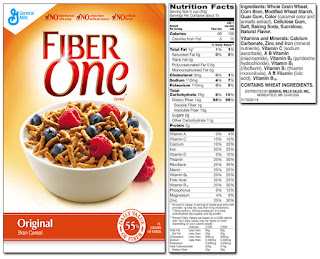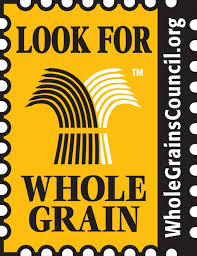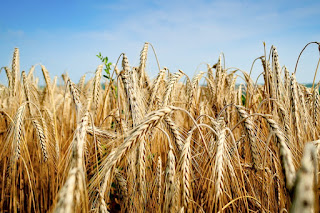As an R.D., there are certain words on repeat in my office: carbs, protein, fat, greens, probiotics. Another one on this list is fiber. Most of us in the nutrition field can agree fiber is a good thing. Fiber is beneficial for your heart, it’s also important for satiety and weight management. But lumping all sources of fiber together is akin, using fats as an example, to comparing hydrogenated oils to an avocado. All fiber is not created equal and you can’t look at the “fiber grams” on a label to determine if something is worth eating. Quality counts with any type of food.
“Whole Grain” BS
Let’s start with “whole grain” products. Just the term “whole grain” gives me flashbacks to the food pyramid and the 1990’s. Most of what’s deemed whole grain on food labels (there’s actually a seal and “standards”) isn’t so whole.
When I think of whole grains, I think of something like this.
You know, grains in their natural form.
But to earn that snazzy seal, you don’t necessarily have to have whole, as in intact, grains. You see grains contain three parts- the bran, the endosperm and the germ. Products with the seal just need to contain these three parts. You can process, mangle and take the grain apart, but if you have the bran, germ and endosperm it’s whole? If I take off the tires and remove the engine, is it still a car? Well not one that works…
In a Scientific American article “whole grain foods aren’t always healthful”, I came across the following information:
Harvard researchers compared the nutrient composition of 545 grain products and found that those labeled with the “Whole Grain” stamp, an industry-sponsored label for foods containing at least eight grams of whole grains per serving, contained more calories and sugar than those without the stamp. They’re also more expensive.
Fiber 1? Not for this one.
Most mass-produced cereals are heavily processed and the high fiber options are no exception.
Take a look at the Fiber 1 label (above).
We’ve discussed the grains but Sucralose (Splenda), caramel coloring? You cannot eat this and call yourself a healthy person. What’s the expression you can judge a person by the company they keep? (googled and it’s “man is known by the company he keeps” I had the right idea). It’s 2017 we know better than artificial sweeteners and carcinogenic coloring. This is as natural as a nose job. Go to the produce section and grab a container of (organic) berries instead.
Is eating wheat bad?
I’ll share a personal story here. After giving birth to my first son, I started having allergic reactions (eyes swelling shut, skin rashes etc.). I did an elimination diet and determined wheat was the cause. I have been wheat free ever since. This past summer, my integrative doctor suggested “you do know the glyphosate the wheat is sprayed with is probably partially to blame.” I was on PubMed before leaving her office. Glyphosate (herbicide AKA as roundup) use was limited in the 70s when it was introduced. In the last two decades, its use has skyrocketed. It’s interesting that I don’t have symptoms from gluten when I travel abroad… Now, I am a sample size of one, not everyone will react in this way. But, since we have no biological requirement for grains. I’ll leave you with this.
“Common wheat harvest protocol in the United States is to drench the wheat fields with Roundup several days before the combine harvesters work through the fields.”
Via healthy home economist.
For all you All Bran, wheat bran, believers, the bran is on the outside of the grain (getting drenched) yum.
So how should I get my fiber?
If you’re freaking out, wondering how to get your fiber without whole wheat bread and fiber cereal? I did some math with my breakfast smoothie. At Foodtrainers, we’re not big on nutrition calculations. If you’re eating whole foods, you don’t need to weigh, measure and count (phew). Anyway, between berries, chia seeds and pea protein I was at 20 grams, with a salad lunch and family dinner I’d have more than enough fiber, as expected. Get your fiber from fruits and vegetables and seeds. And if you’re worried about “going” fiber from whole, unpackaged food, adequate hydration and good fats and you’ll be fine. If you’re still fat phobic, eating nonfat, skim everything? I’ll cover that another day.
Do you eat any “fiber” products? Or, what to do rely on to help you go?





Can you provide more detail on your: berries, chia seeds, and pea protein pls?